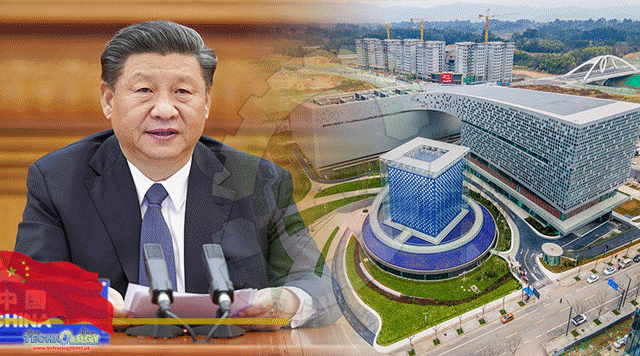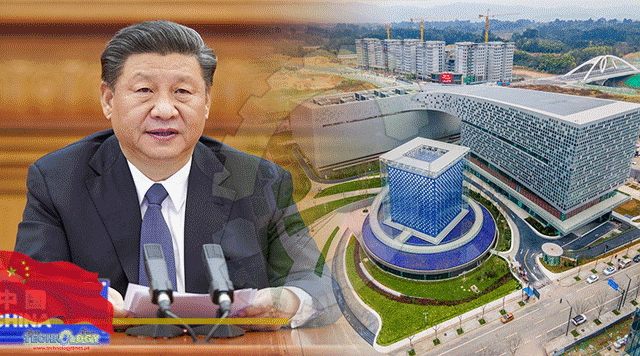To Fulfil China’s Ambition To Become World-Leading Innovator By 2035, Outline Elevates Self-Reliance And Self-Improvement In Science And Tech.

On 12 March 2021, China released an outline of its 14th Five Year Plan (FYP) (2021–2025). The document charts a strategic, innovation-driven blueprint for Chinese development in the short- and medium-term.
Science and technology and innovation in development, which were first highlighted in the 12th FYP, remain key ambitions. Innovation-driven development has become a national strategy for China, along with nurturing talent in science and education. Indeed, the second chapter in the 14th FYP describes innovation as the ‘heart’ of China’s modernisation drive. In Order To Fulfil China’s Ambition To Become A World-Leading Innovator By 2035, The Outline Elevates Self-Reliance And Self-Improvement (Zili Ziqiang) In Science And Technology As Strategic Action Items.
In a departure from previous FYPs, the 14th iteration proposes increasing research and development (R&D) spending by at least 7 per cent every year between 2021 and 2025, and that R&D intensity — gross expenditure on R&D as a percentage of GDP — exceed levels recorded during the 13th FYP period. China’s R&D intensity target was set at 2.2 per cent and 2.5 per cent for the 12th and 13th FYPs respectively. Although neither goal was achieved, R&D as a percentage of national GDP grew fast, with R&D intensity reaching 2.4 per cent in 2020. The new 14th FYP target presumably won’t be under that threshold, but Beijing has not specified a number yet. This may be due to presently high R&D intensity or uncertain economic growth prospects related to the COVID-19 pandemic. Either way, ensuring that R&D investment levels do not drop amid a slowing economy while also allocating resources more effectively remain important challenges.
China’s scientific community wants a clear R&D intensity target. Scientists are specifically concerned about expenditure on basic research. The proportion of R&D spent on basic research in China hovered around the 5 per cent mark for decades before reaching 6 per cent in 2019 — still low compared with an average of 15 per cent found in developed countries. The 14th FYP outline indicates an increase in spending on basic research and a greater share of gross expenditure on R&D allocated for basic research: 8 per cent in the next five years.
Developing basic research not only requires funding but creative talent as well. Nurturing a good research ecosystem is crucial for stimulating the vitality and creativity of scientists. Measures to this end include fair and transparent research evaluations, an effective peer review system and penalties for academic misconduct. Strengthening strategic technological forces will be a critical priority for Beijing over the next five years. China is formulating the ‘Actions for Developing China through Science and Technology’ plan to improve the new ‘whole-of-the-nation’ system (juguo tizhi) in a centrally planned market-oriented economy, achieve breakthroughs in core technologies, and improve the overall efficiency of its innovation system.
The ‘whole-of-the-nation’ system means that the state will mobilise national resources for specific objectives, such as developing strategic weapons technology. China needs to optimise and reorganise its innovation systems. National laboratories will lead the way in technology. From 2021 to 2025, China aims to establish a number of national laboratories in fields such as quantum information, photons and micro-nano electronics, network communications, artificial intelligence, biomedicine and modern energy systems.
But this approach is not perfectly applicable to all situations. It is most suitable for a few state-led fields with clear goals, such as high-speed rail and aircraft. It is less effective in market-oriented or exploratory fields without clear goals. In the transition from imitation to innovation, China needs to shift innovation leadership from the state to businesses, balance power between the government and the market and expand further into emerging industries through technology exploration and entrepreneurship. Ultimately, it is intended that science and technology self-reliance and improvement will support and sustain industrial development. The Chinese government hopes to form a more innovative, higher value-added, more secure and reliable industrial and supply chains.
The 14th FYP focusses on upgrading Chinese manufacturing and transforming China into an advanced manufacturing superpower. The plan calls for boosting global competitiveness in areas such as robotics, new energy vehicles, aerospace and agricultural machinery. To best achieve these goals, the country should adopt a more market-oriented approach and cut red tape. As tensions between China and the United States show no sides of fading, the challenge ahead is how to better connect China and the world. As China embarks on a new era of development, the grand strategic blueprint contained in the 14th FYP is encouraging, but making those plans a reality will require great effort and initiative.
This news was originally published at East Asia Forum.
